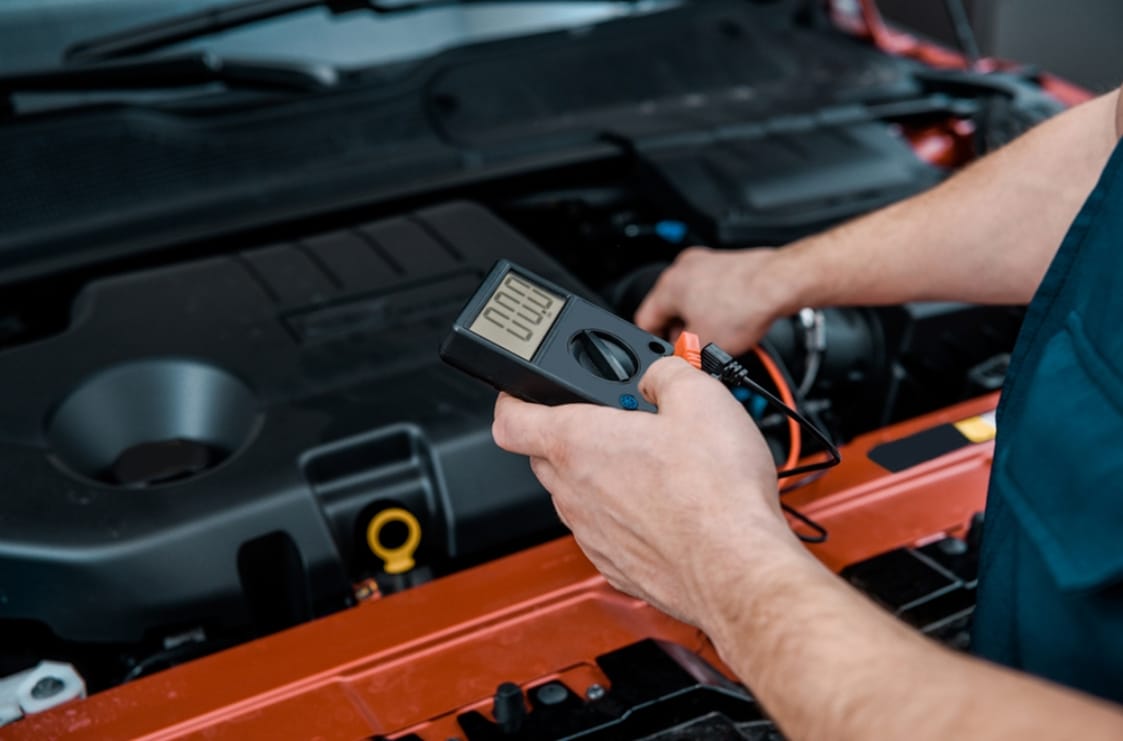

Both 6V and 12V motorcycle batteries sold by Battery Emergency 24 are supplied in a dry state, with a separate tank containing the electrolyte. It is highly advised for the activation to be done in a specialty battery service shop.

Warning:
Electrolyte (diluted sulfuric acid) is highly corrosive and might cause burns. Gloves, glasses and other protective equipment shall be used during operations with batteries at all times. Safety rules shall be obeyed and precautions taken to prevent loss of health. All the operations with batteries shall be conducted in a well-ventilated room equipped with a running water supply. In case of an electrolyte getting into someone’s eyes, those should be immediately washed and rinsed with clean water for a couple of minutes, and then one should contact the doctor right away. Batteries and the electrolyte should be stored out of reach of children.
6N, 12N, C8 series batteries should be filled up to maximal electrolyte level shown on the external packaging. One should pour neither additional electrolyte nor distilled water into the YTZ series batteries, apart from the contents of the tank supplied with the battery. YTX series batteries shall never be opened again after the activation is done. Battery montage shall be performed in accordance with the vehicle manufacturer’s instructions.
1. Inspect the condition of the electrical installation in your vehicle. Battery charging voltage in the vehicle, measured at the battery terminals shall (independently of the engine rpm and active devices onboard) amount to: 7.0 – 7.2V for the 6V nominal voltage installation and 14.0 – 14.4V for the 12V nominal voltage installation.
2. Regularly control the state of charge of the battery (Voltmeter shall display at least 12.6V for the 12V battery at the terminals with the engine shut off and at least 6.3V for the 6V battery in the same conditions. One may also control the density of the electrolyte in each of the battery cells ( 6N, 12N, C8 series batteries ).
3. Battery shall be used in the state of full charge.
4. In case of purely urban driving cycle, repeated usage of external devices or installed power receivers, the state of charge shall be monitored more often, and, if needed, charged up from an external source until we obtain a state of full charge.
5. Discharged battery should be immediately charged in order to avoid its sulfurization and subsequent oxidation and damage or destruction resulting from those.
6. Battery shall be installed properly and rest firmly in the vehicle.
7. Connection of the cables to the battery terminals shall be periodically checked.
8. Battery shall be kept clean and away from water or any moisture.
9. Battery that is no longer being used shall be charged for storage.
Before storing the battery and taking it out of exploitation (ex.: winter period) it shall be taken out of the vehicle and charged fully. It should be stored in a warm room, but away from any heaters. Due to battery’s self-discharge, we advise checking the battery’s voltage at least once every two months, and charging it if the voltage drops below 12.6V for 12V battery and 6.3V for the 6V battery type.
1. It is not advised to charge a battery connected to the vehicle’s electrical system. It shall be disconnected before charging.
2. Charging shall be performed in a well-ventilated room
3. It is prohibited to use open fire in that room. There is a risk of explosion of a gas mix created during the charging process.
4. One shall connect the charger’s positive cable to the battery positive terminal first, and then the “minus” charger cable to the battery’s negative terminal.
5. Turn the charger on.
6. Battery should be charged with a maximum current of 1/10th of its nominal capacity (ex.: 4Ah battery shall be charged with 0.4A, 10A Battery – 1A max.).
7. If the battery temperature rises above 50 deg. Celsius, charging process should be halted, battery should cool down and then the charging process may be continued.
8. Charging shall be stopped if the battery voltage does not rise for two hours whilst being connected to the charger. The battery is fully charged then.
9. After finishing the charging process, in order to avoid sparking and gas explosion, one should turn the charger off first, then disconnect its cables from the battery terminals.
Correct resting voltage is above 12.6V for a functional 12V battery and 6.3V for the functional 6V battery.
Proper electrolyte density shall be around 1.25-1.28 g/cm3.
Exploitation of a battery with electrolyte density below 1.24 g/cm3 is unacceptable. Such a battery must be immediately charged.
Due to the current environmental regulations and with respect to the nature, retail points of new lead-acid batteries are obliged to:
1. Collect the worn-out battery cost-free when selling a new one. Exploited lead-acid battery or a singular cell of an industrial lead-acid battery is a recyclable waste if its elemental structural parts are intact.
2. In case the buyer of the new battery does not supply the old battery, we have to collect a 30zł deposit fee, redeemable in a 30 day period, provided the customer delivers a waste battery, collection of such a fee is confirmed by a proper form.
3. Return the deposit fee in 30 days from the battery purchase date in case if the customer provides an old battery or another waste battery. Fact of returning such a fee is being confirmed with a proper form.
Warning:
If return of the deposited fee in the retail point that has collected the fee is impossible ( temporary break or the point going out of business ), return shall be done by the nearest lead-acid battery waste collection point pointed out by the manufacturer or importer of the battery, that is singled out on the warranty card of the battery. In this case, return of the deposit fee may occur in 45 days from the battery sale date.
